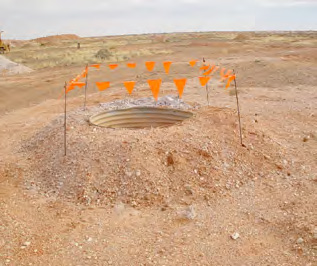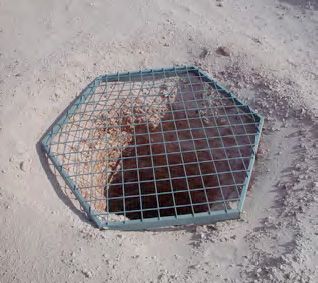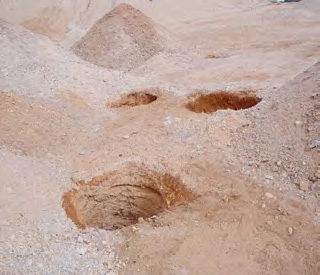Caldwell shafts are sunk during exploration drilling to provide ventilation and access/egress from underground workings on the opal fields. Often these shafts will be in-situ when a claim is pegged. Without adequate identification and guarding, these shafts present a major hazard.
Safety issues
Risks associated with caldwell shafts include:
- shaft covered or obscured with soil from excavation or noodling placed on top
- the coverings used may have degraded and incapable of supporting a person’s weight
- mounded ground collapsing during noodling or when walked on
- work occurred underneath the covered shaft which enabled the ground to collapse and cause engulfment. Vibration or failure of the cover due to corrosion or the weight placed upon it could have been responsible.
Risk control measures
Risk control measures for caldwell shafts include:
- when pegging a claim, ensuring all existing shafts are identified and made safe
- protecting shaft edges by using earthen bunds or the placing of open mesh, capable of supporting a person, over the shaft opening
- on surrendering a claim, ensure all shafts are clearly identified and protected in such a way that alerts a person of their presence
- when noodling or climbing mounds, using a rod to penetrate the ground to identify where a shaft may be covered
- maintaining regular contact with companions to monitor each other’s safety when on the opal fields
- not placing heavy vehicles on top of shaft coverings.







